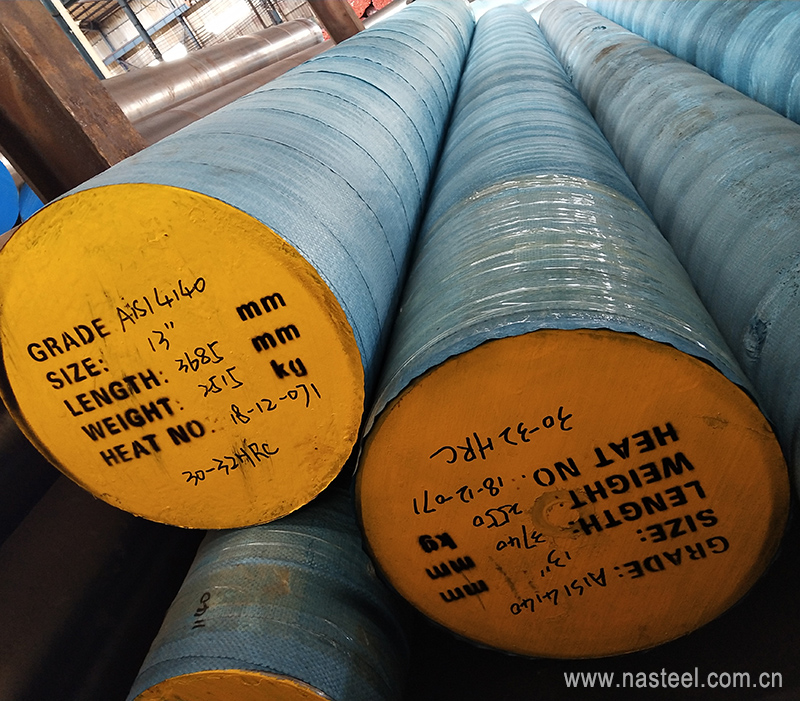How to achieve the best heat treatment performance of AISI4140 steel

To achieve the best heat treatment performance of AISI 4140 steel, you need to follow a carefully controlled multi-step process that considers the steel’s application, desired mechanical properties, and service conditions. AISI 4140 is a medium-carbon, low-alloy steel with excellent hardenability, toughness, and fatigue resistance, making it ideal for critical parts like shafts, gears, and fasteners.
✅ Ultimate Heat Treatment Route for AISI 4140 Steel
🔹 1. Pre-Treatment (Optional but Recommended)
Process: Normalizing
-
Purpose: Refines grain size, relieves internal stresses, improves machinability.
-
Temp: 870–925°C (1600–1700°F), air cool.
🔹 2. Austenitizing (Hardening Prep Step)
-
Temp: 830–870°C (1525–1600°F)
-
Hold Time: ~30–60 minutes depending on section size (1 minute/mm as a rule of thumb)
-
Purpose: Fully transforms the microstructure to austenite.
🔹 3. Quenching
-
Medium: Typically oil, though polymer or gas quenching may be used for distortion control.
-
Result: Martensitic transformation — very hard and brittle structure.
🔹 4. Tempering (Critical Final Step)
Tempering adjusts hardness, reduces brittleness, and improves overall performance.
| Tempering Temp | Hardness (HRC) | Tensile Strength (MPa) | Best For |
|---|---|---|---|
| 200–300°C | ~52–58 | ~1650–1900 | Tools, dies, high wear parts |
| 400–500°C | ~45–50 | ~1300–1500 | Shafts, spindles, crankshafts |
| 550–650°C | ~28–38 | ~800–1100 | General machinery, toughness |
⚠️ Important: Never use AISI 4140 in the as-quenched condition — it becomes very brittle and crack-prone.
🔧 Alternative Heat Treatments for Special Needs
🔸 Induction or Flame Hardening
-
For surface hardness (~58–62 HRC) while retaining a tough core.
-
Ideal for wear-prone areas like gear teeth or camshafts.
-
Depth: ~1–5 mm depending on settings.
🔸 Austempering
-
Produces bainitic structure → great balance of strength, toughness, and fatigue resistance.
-
Process: Austenitize → Quench in salt bath (~300–400°C) → Hold → Air cool.
-
More uniform than quench & temper, but requires specialized setup.
🧪 How to Ensure Best Performance
-
Use proper preheat and soak times to avoid thermal shock and cracking.
-
Use hardness testing (Rockwell C) post-treatment to verify results.
-
Control quench rate — too fast → distortion; too slow → soft spots.
-
Temper immediately after quenching to avoid stress cracks.
-
Avoid over-tempering (>650°C) which may reduce strength too much.
📌 Summary Cheat Sheet
| Target Property | Best Heat Treatment Path |
|---|---|
| Max Wear Resistance | Quench + temper at 200–300°C |
| Balanced Toughness & Strength | Quench + temper at 500–600°C |
| High Surface Hardness + Tough Core | Induction hardening + temper |
| Fatigue Resistance | Austempering or carefully tempered martensite |